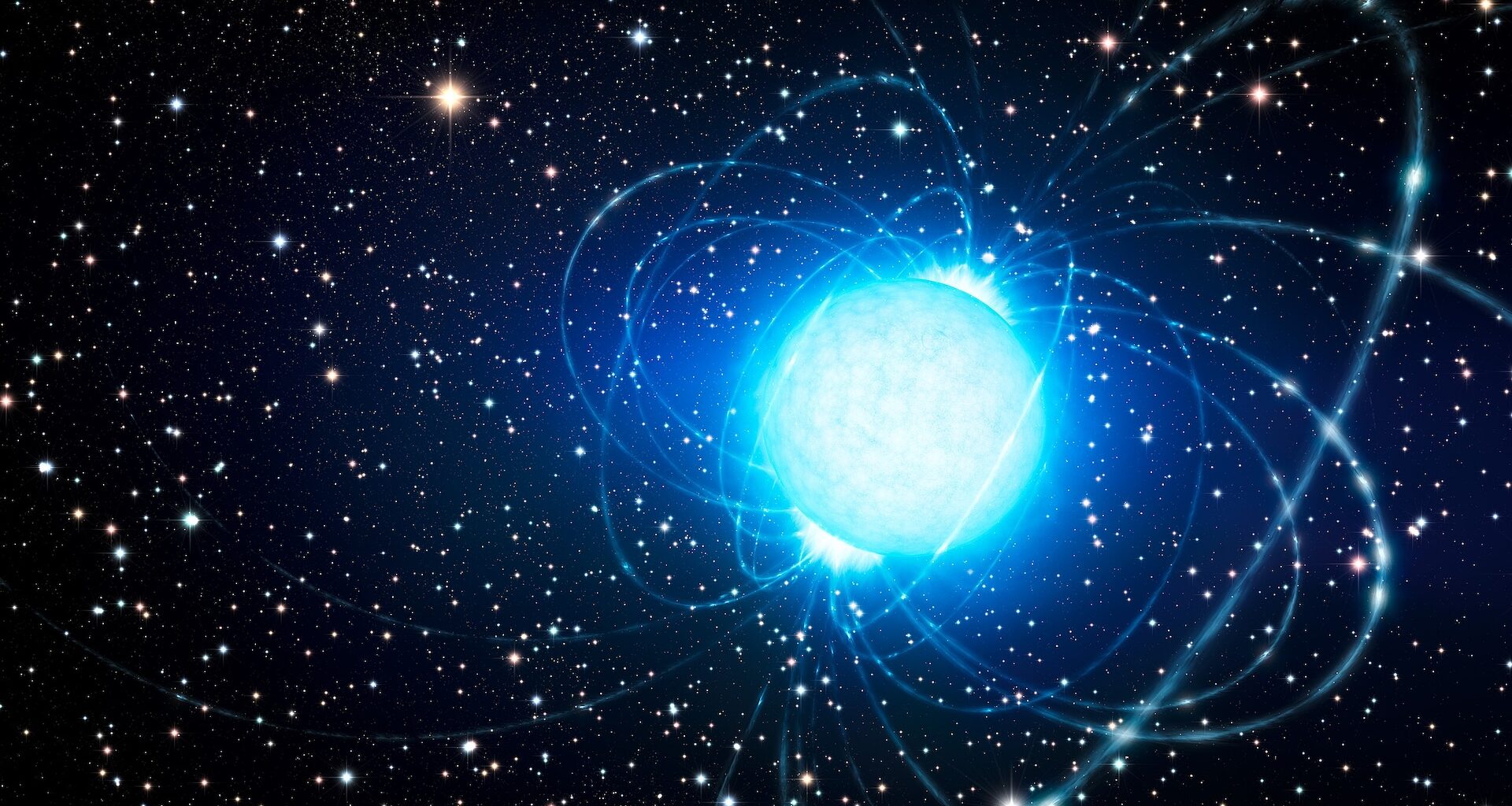A team of astronomers claims it has observed the birth of an unusual cosmic object. In an observation of a gamma-ray captured in 2023, they believe they have detected a signal that is comparable to the “first heartbeat of a newborn star.”
The team, led by astronomer Run-Chao Chen of Nanjing University in China, believes their observation represents the very first signs of life of a magnetar – a type of neutron star that is the most magnetically extreme object in the known universe.
Detecting the ‘heartbeat’ of a magnetar
Magnetars are incredibly powerful cosmic objects. According to NASA, they have “magnetic fields a thousand times stronger than ordinary neutron stars that measure a million billion Gauss, or about a hundred-trillion refrigerator magnets. For comparison, the Sun’s magnetic field is only about 5 Gauss.”
Gamma-ray bursts (GRBs) are the most energetic and luminous explosions in the universe. However, they are fleeting and often only last for a matter of milliseconds. The 2023 GRB, designated GRB 230307A, was caused by the collision of two stars in a distant galaxy. It lasted for an unusually long – by GRB standards – 200 seconds.
The team of researchers, from the University of Hong Kong, Nanjing University, and the Chinese Academy of Sciences, pored over more than 600,000 datasets for their study. These were collected by China’s GECAM satellites and NASA’s Fermi satellite.
The scientists detailed the results of their observations in a paper published in the journal Nature Astronomy. They detected a repeated, consistent signal over several observations. For a mere 160 milliseconds, a periodic gamma-ray fluctuation appeared in the light of the event. The incredibly faint signal was consistent with the rapid spin of a newborn magnetar.
These showed that the star was spinning 909 times per second. According to a report from Universe Today, this represents the first-ever direct detection of a periodic signal created by a millisecond magnetar within a gamma ray burst.
“This event gave us a rare opportunity,” explained Professor Bing Zhang, Chair Professor of the Department of Physics at HKU and co-corresponding author of the study. “By uncovering its hidden ‘heartbeat’, we can finally say with confidence that some GRBs are powered not by black holes, but by newborn magnetars.”
Altering our understanding of the cosmos
The team behind the new discovery theorises that the consistent signal was caused by the magnetar’s magnetic field. In this scenario, the rapid spinning movement of the magnetar alters the gamma ray jet. However, it was only visible when the emission briefly became asymmetric. As such, the signal was only visible for 160 milliseconds before the jet became symmetrical once again.
The new discovery completely alters our understanding of gamma ray bursts, which were once thought to be caused only by black holes. It also contributed to growing evidence that magnetars can be born in the fiery aftermath of a neutron star collision.

